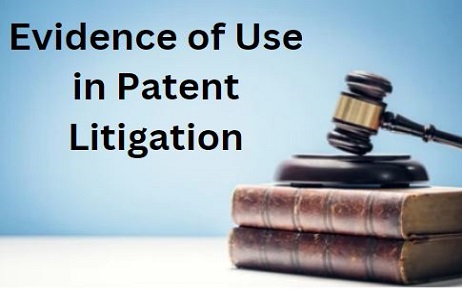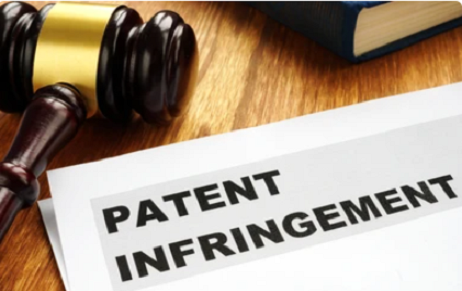All over the world today businesses strive for growth by maintaining a competitive edge in…
Enercon India Ltd (EIL) Vs Enercon GMBH (EG)
This article is directed to interested persons who have not been regularly following the Enercon Case, one the few patent litigation battles which have seen the light of day and are setting new standards in decision making on issues relating to formality rejections and obviousness/inventive step issues. This article puts a quick snapshot of what has happened so far in the contention along with the facts involved in the case:
Introduction Facts:
- EG is among the world’s leading wind turbine manufacturers and had set up EIL in 1995 having a 56% stake in the company. After company level disputes EIL litigated against EG with as a result retaining control of EIL and Mr. Mehra remaining the Managing Director of the company.
- Disputes over certain Licensing agreements led to EIL filing invalidation appeals/revocation petitions at the Intellectual Property Appellate Board for 23 patents (in the name of Mr. Wobben) of EG in Jan 2009. After hearing both parties through October and November 2010, a bench of the IPAB, consisting of Mr. S. Chandrasekharan sitting as Technical Member and Ms. S. Usha sitting as Judicial Member revoked 12 EG’s patents. The decision of IPAB on the preliminary matters relating to Misc. petitions, dated 27’th July 2010, in which IPAB directed miscellaneous petitions to be considered along with the respective original Revocation applications thereby dismissing the writ petition.
- EG made an appeal against this preliminary order of the IPAB, praying for the Madras High Court to issue a writ of certiorari to strike down the impugned order. The issue at the discussion was whether Mr. Yogesh Mehra, MD, of EIL, had the locus stand to maintain the application for revocation. On the one hand, according to the respondent, Mr.Yogesh Mehra relied on a Board resolution dated 27.04.2007, which according to them authorized him to institute suits and proceedings on behalf of the company. This was controverted by the writ petitioner EG by stating that the resolution dated 27.04.2007 was void and non-est. The Madras High Court relied on the decision by the Hon’ble Supreme Court in the case of M/s. Fomento Resorts and Hotels Ltd. and specifically took note of the fact that when there is a possibility of appeal all issues have to be taken up and decided. As the facts of the case clearly indicate that there is a definite possibility of appeal against the decision of the Tribunal and the present writ petition itself is one such illustration. Therefore, the court ordered that the Tribunal rightly directed miscellaneous petitions to be considered along with the respective Original Revocation Applications thereby dismissing the writ petition.
- Substantive disclosures of how the 12 patents were struck down have not been right now made available but one such order was for Patent No. 199045 dated 3’rd December 2010 has been shared by MIPR.
- Furthermore, even though issues relating to locus standee were raised by the EG’s counsel which discussed on whether Mr. Mehra could be considered as an interested person, our discussion is strictly on the technical side of patent revocation and not on the legalities relating to authorization of Managing Director who has not been duly authorized by the Board of the Indian Company viz. EIL to sign the revocation application and further his ability also to file the affidavit in respect of the revocation application for the revocation of the subject patent.
Analysis of One Exemplary Patent:
Indian Patent No. 199045 (Corresponding WIPO Application)
Abstract:
The present invention concerns a wind power installation having a tower head of the wind power installation, comprising a flange for receiving a connection which is suitable for receiving the tower head, for the wind power installation. Therefore the object of the invention is to provide a tower of a wind power installation having a flange for receiving a connection, wherein the tower does not suffer deformation in respect of its cross-section, in particular in the region of the flange, by virtue of the inherent weight of the tower, during manufacture and/or transport. A tower of a wind power installation for carrying a tower head of the wind power installation, comprising a flange for receiving a connection which is suitable for receiving the tower head of the wind power installation, characterized in that there is provided a partition or a ring bulkhead in the tower interior at a spacing of between preferably 1.0 m and 7.0 m from the flange, and the partition or the ring bulkhead substantially forms a disc which is connected to the tower wall in the tower interior and passes through the tower.
First Independent Claim as granted:
1. A wind power installation having a tower head of the wind power installation, comprising: a tower for supporting the tower head, the tower having an interior and a flange for receiving a connection that is suitable for receiving the tower head of the wind power installation; and a ring bulkhead in the tower interior at a spacing of between 1.0 m and 7.0 m from the flange, wherein the ring bulkhead substantially forms a disc that is connected to an interior wall of the tower.
Reliance was made on US Patent No. 3,761,067 having cited portions Col 1 (Lines 3-5) disclosing cooling towers, Col 1 (Lines 25-30, and Lines 43-44) for giving related to the same problem that patent under revocation is attempting to provide a solution for, Col 1 (Lines 46-54) and Col 1 Lines 62-65 disclosing stiffening rings for force distribution, wherein the rings are ring or disc-shaped. ‘067, therefore, disclosed the proposed inventive step of the subject patent by disclosing a ring structure in the tower, wherein the ring is disc-shaped.
It was furthermore stated that a tower having a flange was already admitted by the Applicant of the patent under contention to be existing in the art and hence made part of the Background section of the patent application by stating that “A flange is usually provided at the end of the tower, in the case of the steel towers. That flange forms the flat support surface of the tower for receiving an azimuth mounting, in which respect ball-type rotational connections as are known in the general art are predominantly used as the azimuth mounting. This is shown in Figure 1.” Hence a flange for receiving a connection of a tower head couldn’t be considered as an inventive step.
Reliance was also made on US Patent No. 1,947,515 titled Elevated Tank wherein Page 2 Lines 90-99 was submitted to have disclosed use of a ring 27 which was riveted or welded circumferentially within the tower.
Reliance was also made on US Patent No. 4,261,931 titled “Cooling tower with fluted wall” discloses with a cited portion being Col 5, Lines 30-40 wherein horizontal circular rings were disclosed to withstand the compressive loads.
Reliance was also made on US Patent No. 4,010,580 on similar inventive step grounds. It was also stated that all the above four cited prior art references have not been discussed or been deliberated before in the prosecution for the corresponding patent in other geographies including US, EP, or India, and hence the prior arts are valid and should be considered relevant.
It was finally concluded that “Comparing the inventive features in ’067 patent and the inventive features as construed from the principal claim 1, no difference in the invention claimed in the claim of the impugned patent could be perceived or notices.” It was therefore ordered by Mr. S. Chandrasekharan sitting as Technical Member and Ms. S. Usha sitting as Judicial Member that the application for revocation of the patent has been allowed.
- After having 12 of its patents struck down by IPAB, EG, in Feb 2011, surprisingly filed an appeal before the writ jurisdiction of the Delhi High Court against the Orders of the IPAB striking down 12 patents belonging to Dr. Wobben even though the case would typically have come under the jurisdiction of Madras High Court as IPAB that heard the revocation proceedings was based on Chennai and not in Delhi.
- In April 2011, it has also been reported that Enercon GMBH has also filed further writ appeals before the Madras High Court against the Orders of the IPAB revoking several of his patents. The appeals have therefore been filed in both the jurisdictions
- In the latest bit of update on the progress of the case, Enercon GMBH filed applications for withdrawal of three of its appeals for a counterclaim against 3 of its revoked patents were accepted by the Delhi High Court. As the appeals against the other 9 revoked patents are going on in Madras High Court, it is quite possible that these 3 withdrawn appeals might get filed at the Madras High Court for consistency and other possible reasons.
About the Author: Mr. Tarun Khurana, Partner and Patent Attorney in the Institute of Intellectual Property Research & Development (IIPRD) and can be reached: [email protected].



